Eisbaden bei dir zuhause war noch nie so einfach wie heutzutage. Warum? Weil es einfach viele Möglichkeiten gibt sich das so einzurichten, dass es auf die eigenen Bedürfnisse passt. Egal ob nur eine Dusche oder Badewanne zur Verfügung steht, du einen kleinen Balkon oder Gärtchen dein eigen nennst. Wir zeigen dir in diesem umfangreichen Artikel viele Möglichkeiten auf einfach und schnell zu deinem Eisbad daheim zu kommen, egal ob eine gekaufte oder Bastellösung.
Inhaltsverzeichnis
Eistonne oder Eisfass
Eine sehr gute Möglichkeit zum Eisbaden zuhause ist die Nutzung einer Regentonne oder eines Fasses, z.B. auf deinem Balkon oder im Garten. Das Wasser kann entweder über das Ablaufrohr einer Regenrinne oder über einen Wasseranschluss in die Tonne oder das Wasserfass eingespeist werden. Der Wasseranschluss sollte im Außenbereich über einen Volumenkompensator verfügen, so dass er im Winter nicht zufriert und du damit riskierst, dass dein Wasserrohr platzt.
Materialien für die Regentonne / Eisfass
Die meisten Regentonnen bzw. Eisfässer bestehen aus Kunststoff, vorwiegend aus Polyethylen (PE) oder Polypropylen (PP). Es gibt auch Fässer aus Holz. Meist sind diese aus Eichenholz, teilweise jedoch auch aus Akazien- oder Robinienholz. Manchen gefällt die Holzoptik besser als Plastik und eignet sich auch gut als Blickfang für den Garten. Es gibt jedoch auch schöne Barriquefässer-Imitate aus PE oder PP.
Man sollte bei der Wahl eines Holzfasses darauf achten, dass es aus einem möglichst hartem Holz, wie Eiche, besteht. Holz ist ein Naturmaterial und „arbeitet“ entsprechend. Hartes Holz hat die Eigenschaft, weniger schnell auf- bzw. abzuquellen, als weiches Holz. Das hat Vorteile, wenn das Holzfass mal eine Weile leer stehen sollte und dann wieder aufgefüllt wird. Grundsätzlich ist eine Regentonne aus Kunststoff pflegeleichter und günstiger als ein Holzfass. Dennoch ein Holzfass hat eine schöne Optik und viele Eisbader möchten eher Naturmaterialien in ihrem Garten haben als Plastiktonnen. Das Holzfass hat zudem den Nachteil, dass es ca. 100 KG wiegt im leeren Zustand. Dadurch kann es nicht mal soeben leicht verschoben werden, sondern sollte an einem festen Platz bleiben. Wenn man diesen hat ist es jedoch ein schickes Accessoire für jeden Garten.
-
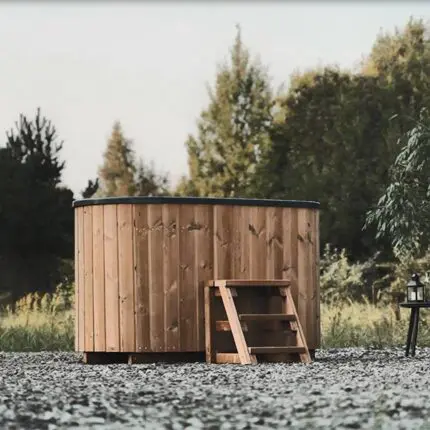 Holzwanne mit GFK Einsatz zum Eisbaden 2 Personen1.690,00 €
Holzwanne mit GFK Einsatz zum Eisbaden 2 Personen1.690,00 €inkl. MwSt.
zzgl. Versandkosten
Lieferzeit: ca. 5-7 Wochen
-
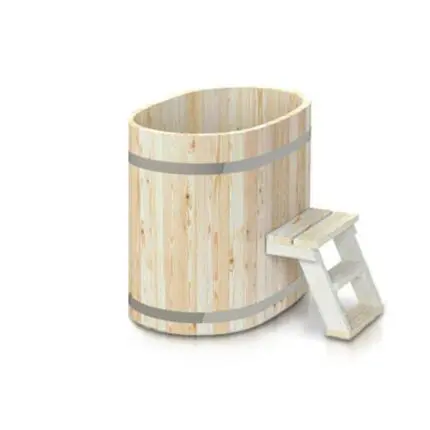 Eisbadefass aus Holz für 2 Personen990,00 € – 1.190,00 €
Eisbadefass aus Holz für 2 Personen990,00 € – 1.190,00 €inkl. MwSt.
zzgl. Versandkosten
Lieferzeit: ca. 30 Tage
-
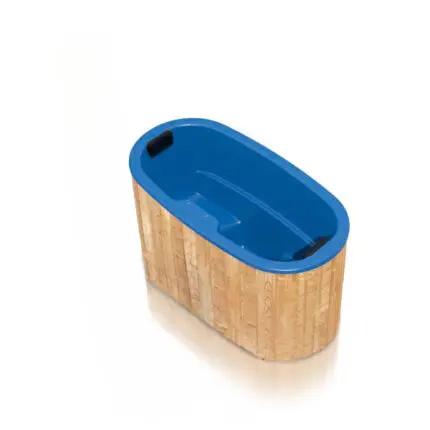 Eisfass aus Holz Oval für 2 Personen1.690,00 €
Eisfass aus Holz Oval für 2 Personen1.690,00 €inkl. MwSt.
zzgl. Versandkosten
Lieferzeit: ca. 14 Tage
Und hier siehst du einmal ein paar unserer Nutzer beim Eisbaden in ihren Gärten oder Balkonen in diversen Tonnen.
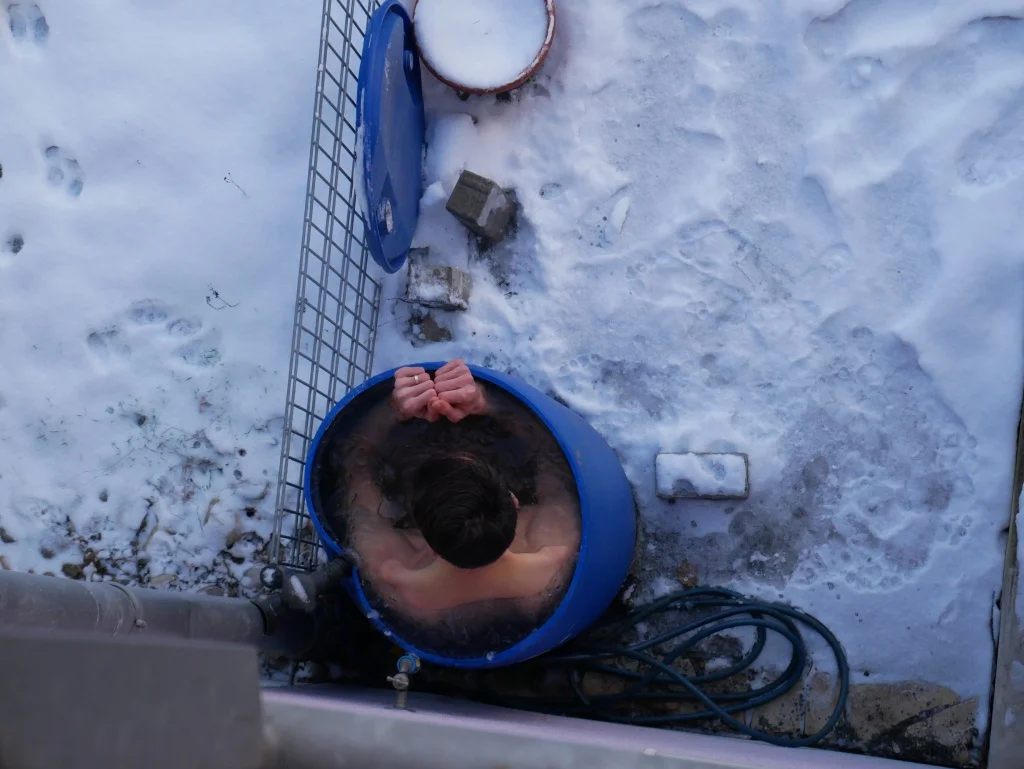
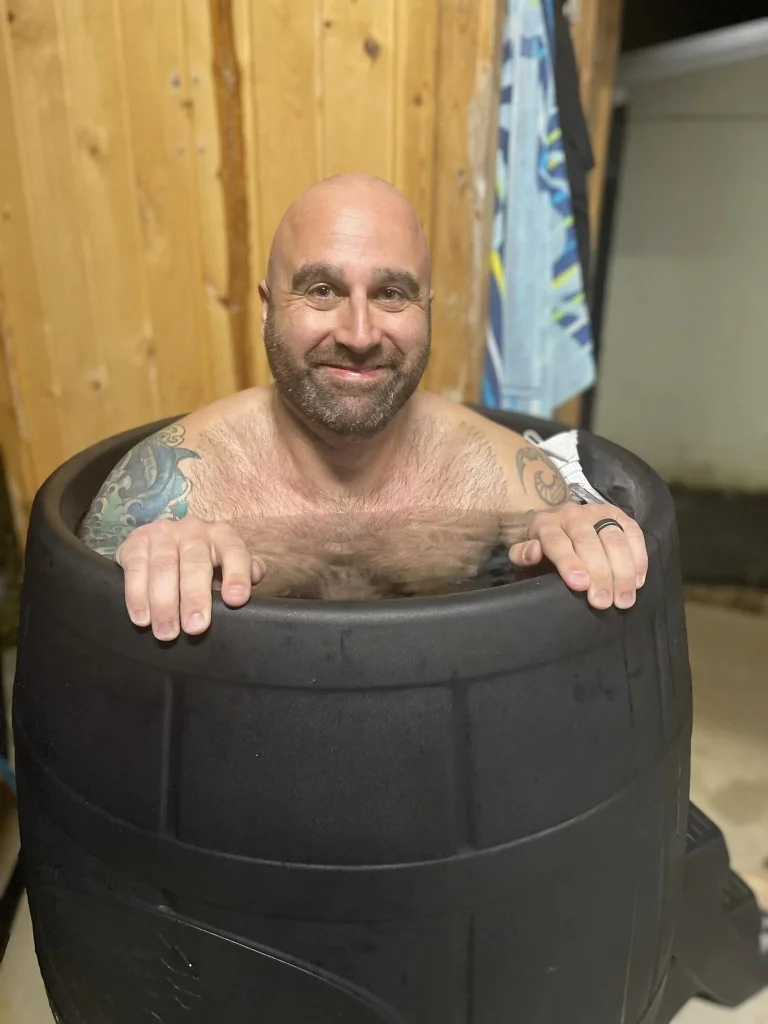
Vor- und Nachteile von Regenfässern und Tonnen
| Vorteile | Nachteile |
|---|---|
| Naturfeeling | Benötigt Leiter / Hocker oder etwas Akrobatik zum Einstieg |
| Günstig in der Anschaffung | Etwas Bastelarbeit mit dem Anschluß |
| Benötigt wenig Platz im Garten / Balkon | |
| Nutzung das gesamte Jahr über | |
| Keine zusätzlichen Wasser / Energiekosten | |
| Bequem & Nah bei dir zuhause |
Aufblasbare Eistonne
Aufblasbare Eistonnen sind stark im Kommen und viele Nutzer kaufen sich ein solches Eisbad für den Garten, Balkon oder auch zum mitnehmen. Denn Eisbaden ist besonders schön wenn man auch mal die Location wechseln kann.
Die aufblasbaren Eistonnen sind super leicht und schnell aufgebaut und benötigen keine speziellen Kenntnisse. Das sollte nicht länger als 5 Minuten dauern. Der Ring wird mit einer kleinen Handpumpe aufgepumpt, so kannst du zum Beispiel auch deine Arme darauf legen.
Diese aufblasbaren Tonnen sind zudem sehr platzsparend, denn erstens sind sie kleiner dimensioniert als feste Tonnen, zweitens kannst du sie wenn du sie nicht benötigst einfach zusammenfalten und in den Keller stellen. Meistens gibt es die aufblasbaren Tubs in den Größen 75cm x 75cm und aufwärts. Damit ist wie du im Foto unten in einem 75 x 75 Tub sehen kannst genügend Platz zum Sitzen. Die Tubs sind zudem isoliert, können also die Kälte etwas länger speichern.
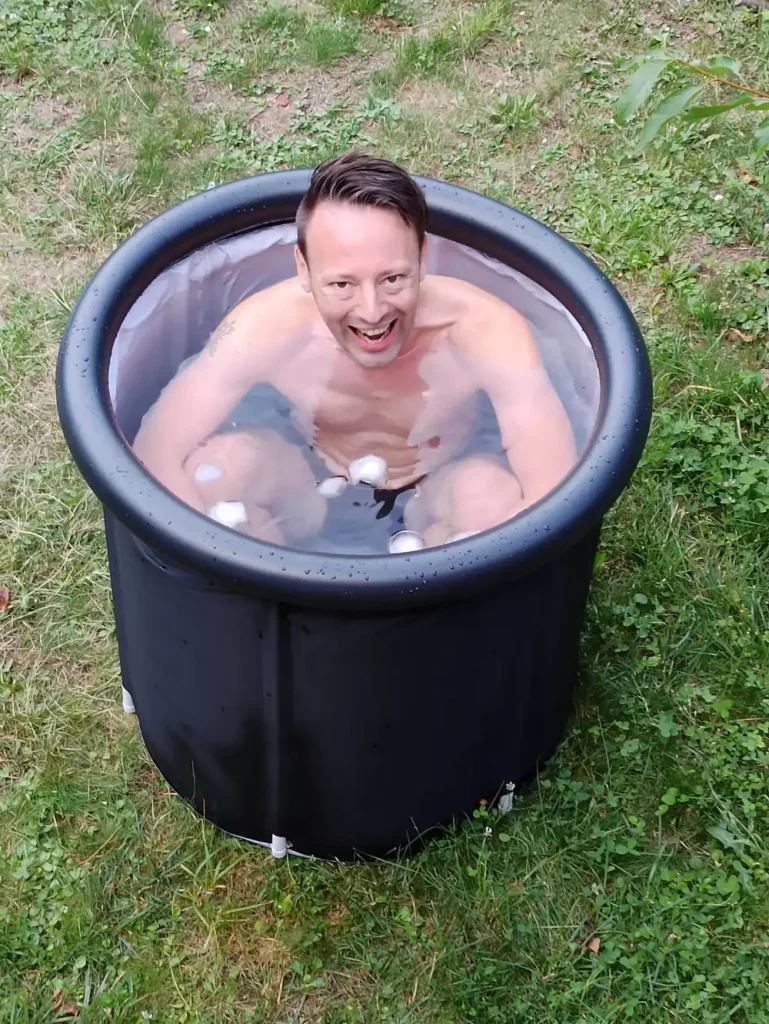
Du kannst unsere Chief Ice Officer Eistonne unten kaufen, mit allem erdenklichen Zubehör inklusive. Die Tonne ist 3-fach isoliert und kommt mit zwei Deckeln, einer Pumpe, Flickset, Tragetasche und modischem Design. Es hat ein top Preis-Leistungsverhältnis und ist einer unserer beliebtesten Bestseller. Die Tonne ist passend für alle Größen und hat einen Durchmesser von 80 cm.
Und es gibt auch noch größere aufblasbare Wannen bzw. Tubs in die auch mehr als eine Person passen bzw. die gut dazu geeignet sind die Beine auszustrecken. In den kleineren Tubs ist immer nur eine Hockposition möglich. Für ganz hohe Eisbader*innen eignen sich deshalb eher ovale längliche Tubs. Diese sind ebenfalls sehr leicht und zudem auch noch besser isoliert, denn sowohl die Außenwand als auch der Deckel werden komplett aufgepumpt und halten somit das Wasser für eine längere Zeit kalt.
Hier findest du alle Eisbaden Tonnen und Tubs in unserem Sortiment.
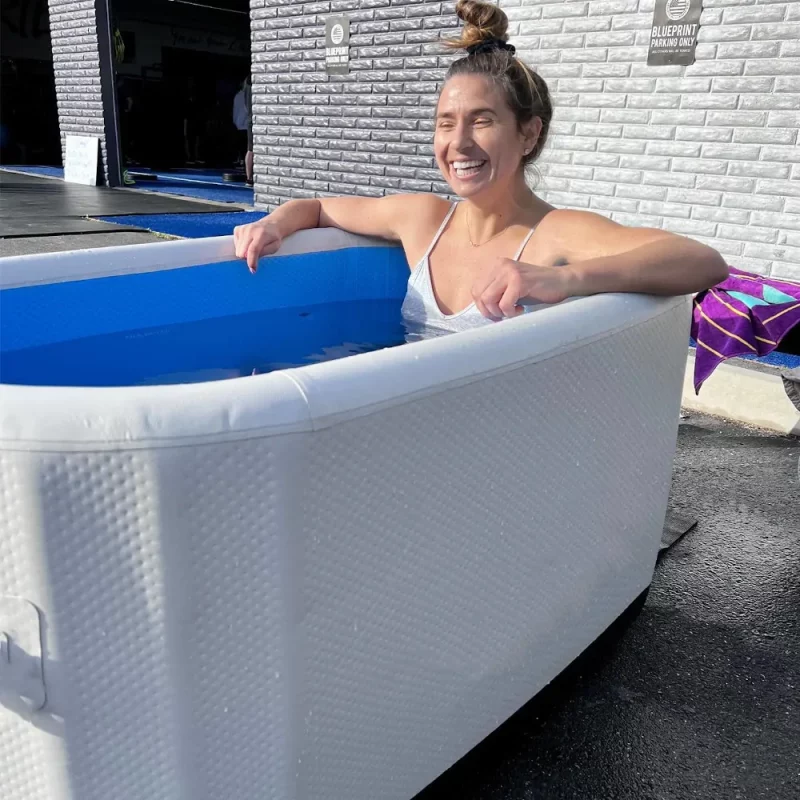
Vor- und Nachteile von aufblasbaren Eistonnen
| Vorteile | Nachteile |
|---|---|
| Können schnell und ohne Vorkenntnisse aufgebaut werden | Haltbarkeit etwas limitiert |
| Sehr günstig in der Anschaffung | |
| Benötigen sehr wenig Platz | |
| Können mobil mitgenommen werden | |
| Bequem & Nah bei dir zuhause | |
| Passend für fast jede Körpergröße | |
| Isoliert |
Eisbad zuhause kühlen
Es gibt diverse Möglichkeiten das Eisbad auch im Sommer zu kühlen. Wir haben hier eine gute Übersicht zusammengestellt mit Vor- und Nachteilen vom Eisbaden bei warmen Temperaturen.
Durchlaufkühler
Sind stark im Kommen und erlauben das schnelle und einfache herunterkühlen des Eisbades bei höheren Temperaturen. Das Prinzip ist eine Pumpe die aus einem (meist) beliebigen Gefäß das Wasser ansaugt und durch einen Durchlaufkühler wieder zurück in das Becken pumpt. Das ist sehr effizient und auch relativ kostengünstig.
Professionelle Kältebecken
Kältebecken sind ebenfalls eine gute Methode, kühlen schnell und haben eine Wasserreinigung schon eingebaut. Sie sind allerdings preislich auch eher im oberen Bereich angesetzt. Allerdings sind sie optisch schöner und oft auch für eine Aufstellung im Außenbereich geeignet.
Wir haben hierzu auch einen Artikel zum Thema Chill Tubs geschrieben. Chill Tubs sind professionelle Kältebecken mit einem tollen Design, robusten Kältemaschinen, Fernsteuerung per App und professionellem Wasserfilter per Ozon und Partikelfilter.
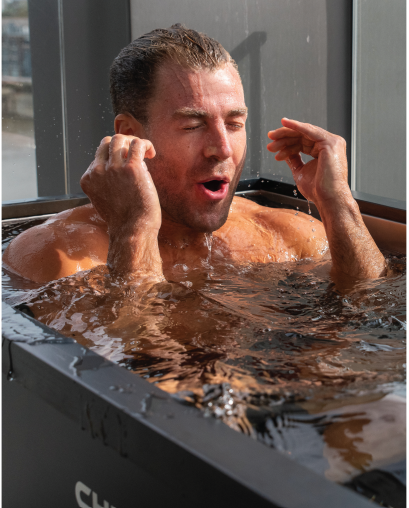
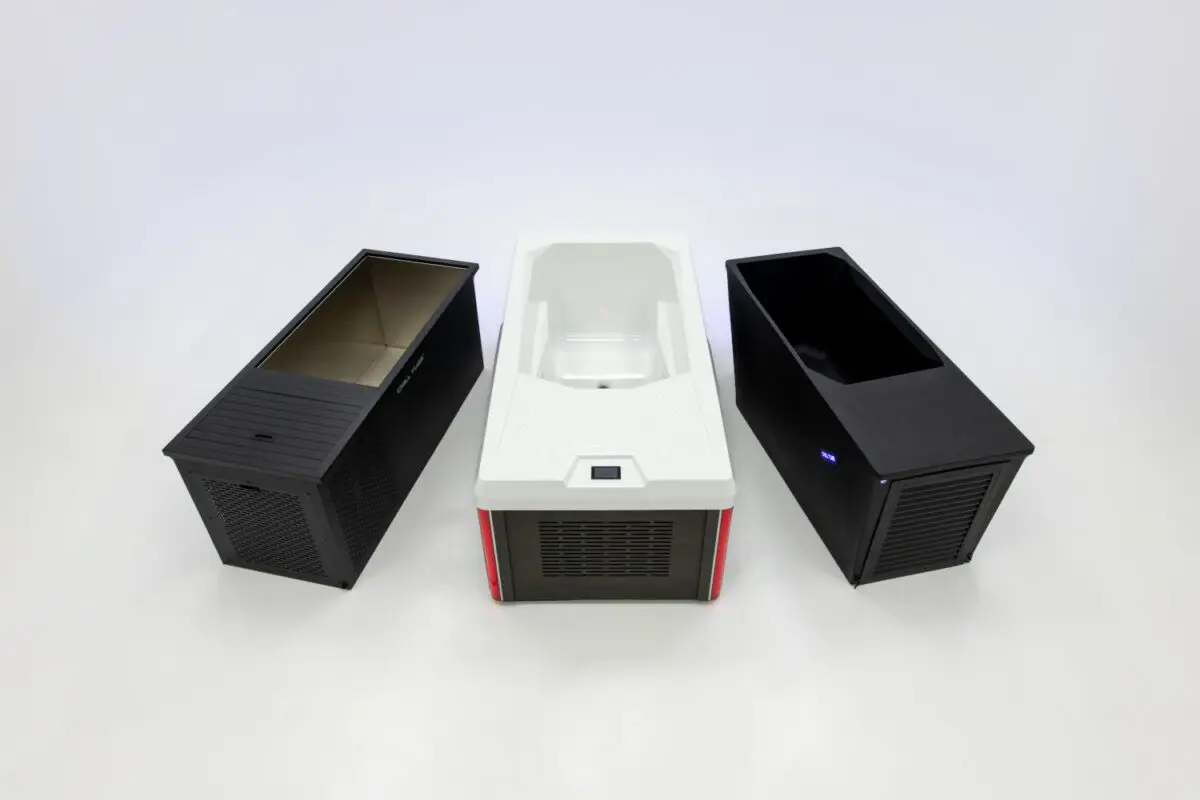
-
Produkt im AngebotChill Tubs Pro EisbadAlter Preis: Ursprünglicher Preis war: 7.990,00 €Neuer Preis: 7.099,00 €Aktueller Preis ist: 7.099,00 €.
inkl. MwSt.
zzgl. Versandkosten
Lieferzeit: ca. 14 Tage
-
Chill Tubs Original Eisbad Kühlsystem5.890,00 €
inkl. MwSt.
zzgl. Versandkosten
Lieferzeit: ca. 14 Tage
-
Produkt im Angebot
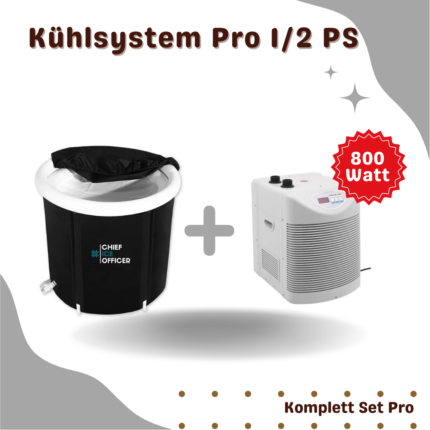 Eisbad mit Kühlsystem 1/2 PS (Komplett Set Pro)Alter Preis: Ursprünglicher Preis war: 1.490,00 €Neuer Preis: 1.390,00 €Aktueller Preis ist: 1.390,00 €.
Eisbad mit Kühlsystem 1/2 PS (Komplett Set Pro)Alter Preis: Ursprünglicher Preis war: 1.490,00 €Neuer Preis: 1.390,00 €Aktueller Preis ist: 1.390,00 €.inkl. MwSt.
zzgl. Versandkosten
Lieferzeit: ca. 14 Tage
-
Produkt im Angebot
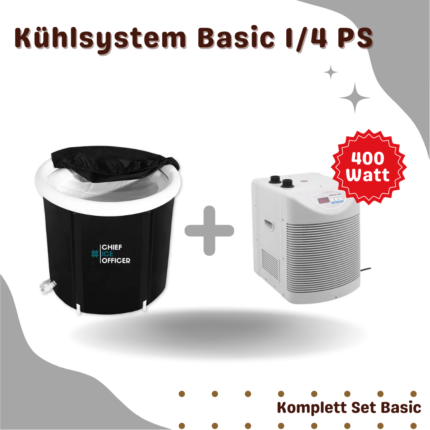 Eisbad mit Kühlsystem 1/4 PS (Komplett Set Basic)Alter Preis: Ursprünglicher Preis war: 1.290,00 €Neuer Preis: 1.190,00 €Aktueller Preis ist: 1.190,00 €.
Eisbad mit Kühlsystem 1/4 PS (Komplett Set Basic)Alter Preis: Ursprünglicher Preis war: 1.290,00 €Neuer Preis: 1.190,00 €Aktueller Preis ist: 1.190,00 €.inkl. MwSt.
Lieferzeit: ca. 14 Tage
-
Arctic Tub Eisbad mit Kühleinheit3.990,00 €
inkl. MwSt.
zzgl. Versandkosten
Lieferzeit: ca. 14 Tage
Umgebaute Tiefkühltruhe
Gefriertruhen oder Tiefkühltruhen eignen sich sehr gut, um zuhause darin eiszubaden. Da sie von Natur aus schon isoliert sind, wird die Kälte sehr lange gespeichert. Gefrier- und Kühltruhen gibt es in allen möglichen Größen und viele Geräte haben Dimensionen, die locker einen Erwachsenen liegend aufnehmen können (siehe unten das Bild von Joe). Eine solche Größe benötigst du jedoch nicht wirklich, wie du weiter unten siehst, geht das auch sehr gut in viel kleineren Tiefkühltruhen.
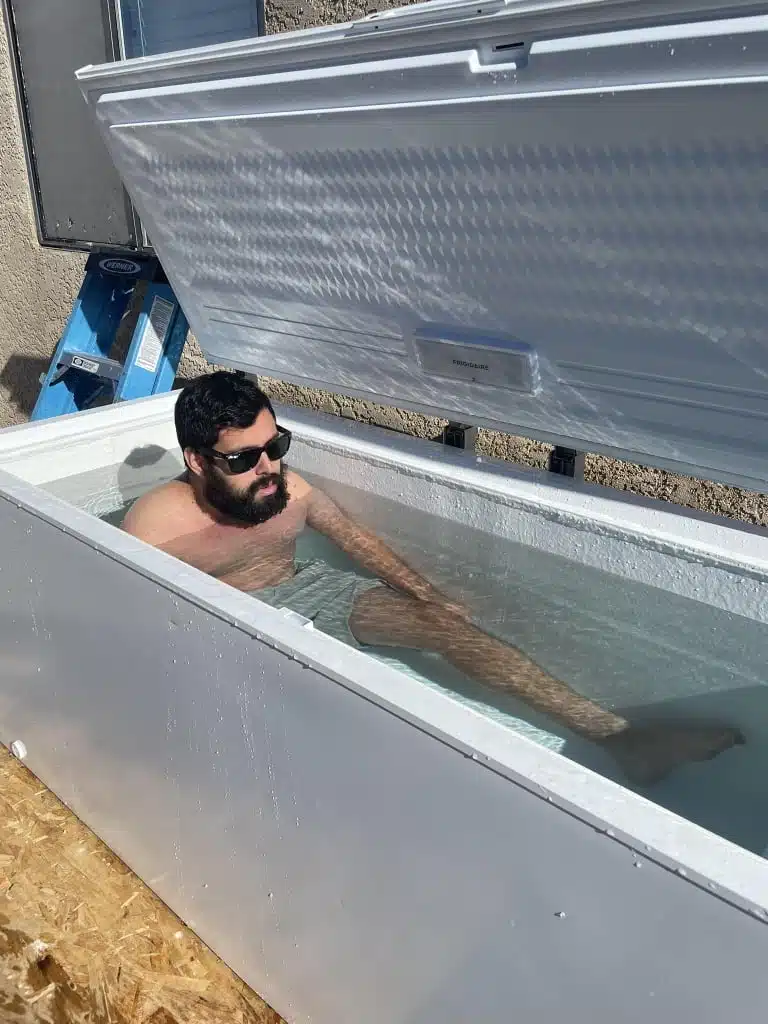
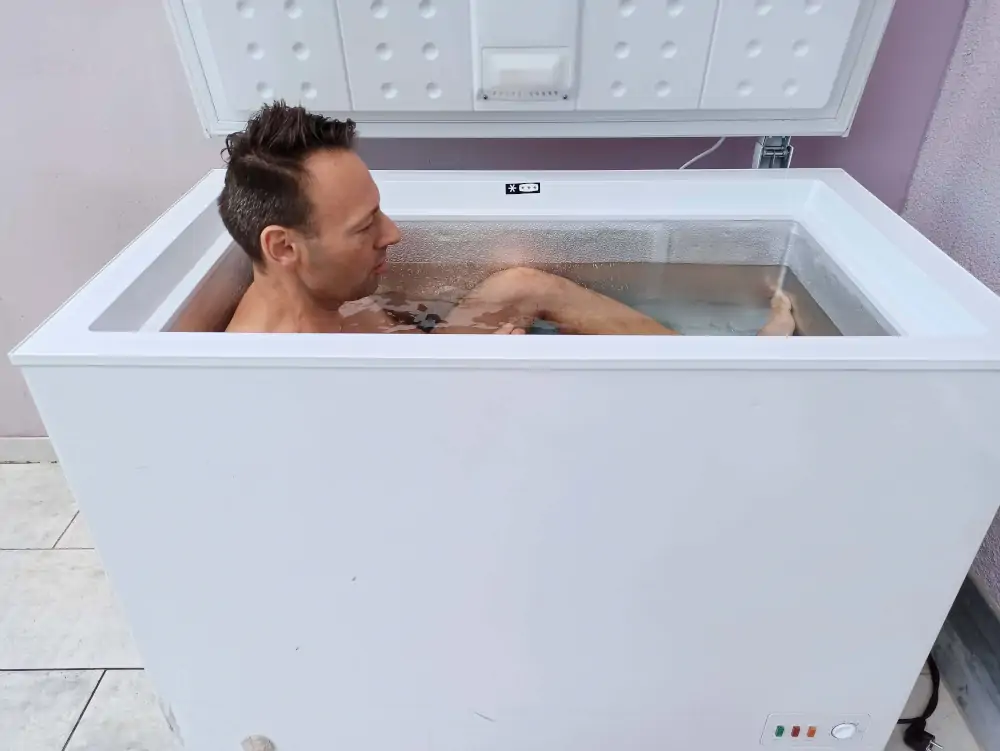
Das Wasser in einer Gefriertruhe kann direkt gekühlt werden, es bedarf also keines zusätzlichen Aufwandes, beispielsweise Zufuhr von Eis. Die Geräte sind über das ganze Jahr temperierbar, man ist zeitlich flexibel und die Nutzung ist sehr bequem. Die Energiemengen die benötigt werden um eine kleine Truhe auf unter 5 °C zu kühlen sind sehr überschaubar. In unserem großen Test braucht die Kühltruhe unter 100 Watt Leistungsaufnahme und insgesamt zum runterkühlen ca. 1 KwH was bei den aktuellen Strompreisen ungefähr 0,35 EUR entspricht.
Wir haben einen großen Ratgeber geschrieben wie du deine Tiefkühltruhe selbst anpasst, worauf es dabei ankommt von der Größe bis zum Energieverbrauch. Hier findest du mehr Informationen wie du eine Tiefkühltruhe zum Eisbaden nutzen kannst.
Vor- und Nachteile von Tiefkühltruhen zum Eisbaden
| Vorteile | Nachteile |
|---|---|
| Von Natur aus sehr gut isoliert | Keine Mobilität |
| Kann einfach heruntertemperiert werden | Etwas sperrig und platzraubend |
| Stabiles Setup | Mit (wenig) Bastelarbeit verbunden |
| Überschaubare Energiekosten | |
| Passend für jede Körpergröße | |
| Kann innen und außen aufgestellt werden | |
| Programmierbar bezüglich Zeit und Temperatur |
Eisbaden in der Badewanne
Fast jeder hat eine Badewanne zuhause und kann diese zum Eisbaden nutzen. Das ist sicherlich eine der pragmatischsten Möglichkeiten, um in deiner gewohnten Umgebung Eisbaden praktizieren zu können. Im Prinzip gibt es nur zwei Komponenten, die du dafür benötigst: Wasser in flüssiger und gefrorener Form. Leitungswasser hat eine Temperatur von ca. 15 °C, du musst es also durch Eis etwas runterkühlen.
Füllmengen Eis und Wasser für deine Badewanne
Badewannen haben in etwa die folgenden Füllmengen:
Kleine Badewanne – ca. 200 Liter
Mittlere Badewanne – ca. 250 Liter
Große Badewanne – ca. 300 Liter
Eine gute Richtschnur ist, die Wanne zu ungefähr 3/4 mit kaltem Leitungswasser und zu 1/4 mit Eis zu befüllen. Und natürlich muss die Badewanne nicht randvoll sein. Bei einer mittleren Badewanne reicht beispielsweise schon ca. die Hälfte der gesamten Füllmenge, also 125 Liter, die sich entsprechend aus etwa 95 Liter kaltem Leitungswasser und ca. 30 Kilo Eis zusammensetzt. Dadurch hast du einen guten Mix, der dich sehr nah an die Eisbaden Temperatur von 5 °C bringt. Je nachdem, ob du es noch kälter möchtest, kannst du natürlich mit dem Eis- / Wasserverhältnis spielen. Hier findest du die komplette Übersicht wie du dein Eisbad im Sommer kühlen kannst.
Unten siehst du ein paar Beispiele von Badewannen gefüllt mit großen Eisklötzen und Eiswürfeln. Bei den großen Eisklötzen dauert es länger, bis diese die Kälte abgeben, es ist aber leichter, diese im heimischen Tiefkühlfach zu produzieren. Die kleineren Eiswürfel geben die Kälte bereits innerhalb von 15 Minuten an das umgebende Wasser ab, insofern kannst du schnell rein und hast einen guten Kältereiz.

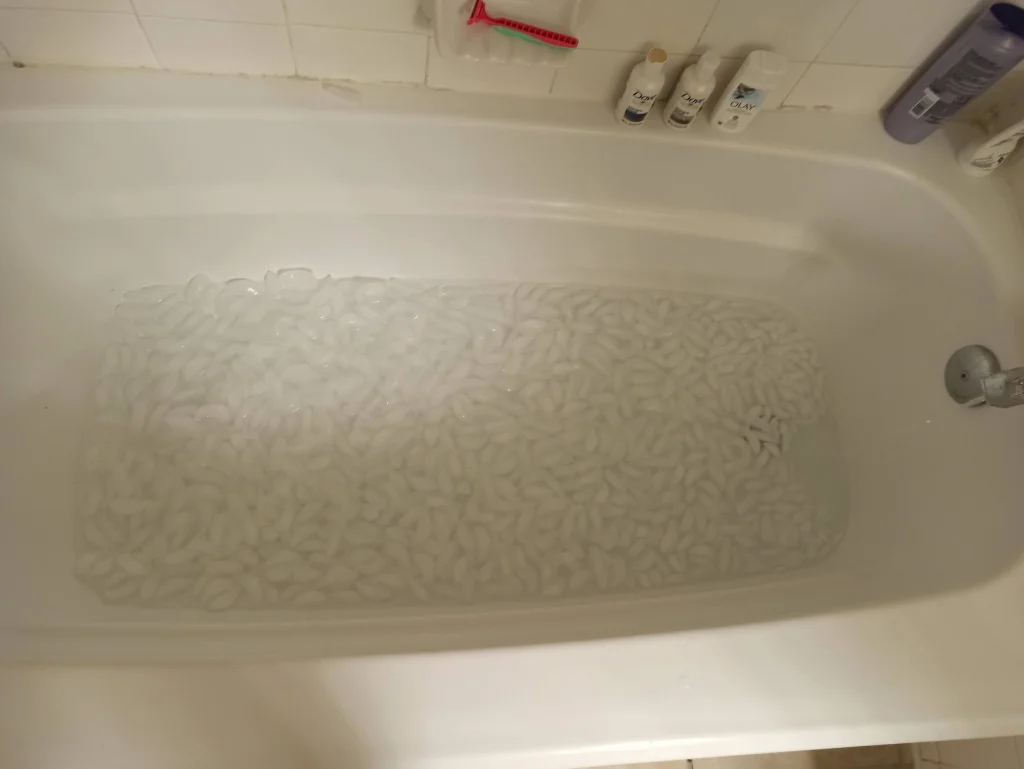
Vor- und Nachteile von Badewannen zum Eisbaden
| Vorteile | Nachteile |
|---|---|
| In vielen Fällen schon im Haus bzw. Wohnung vorhanden | Keine Mobilität |
| Günstig, da keine zusätzlichen Anschaffungen notwendig | Eingeschränkte Möglichkeit das Wasser zu kühlen (nur mit Eis) |
| Frischwasserzulauf und -ablauf | Kein Naturerlebnis |
| Groß genug für Ganzkörperbaden |
Eisbaden im IBC Tank
Ein IBC (Intermediate Bulk Container) Tank oder IBC Container ist ein Gittertank, ein sogenanntes Großpackmittel, welches gerne in der Industrie zum Transport und Lagerung von meist flüssigen Stoffen wie Chemikalien, Lebensmittel oder Pharmaprodukte eingesetzt wird. Die Form ist quaderförmig mit einem Fassungsvermögen von 300-1.000 Litern. Das soll dich natürlich nicht davon abhalten, einen IBC Tank in deinem Garten zuhause aufzustellen, denn diese Container sind auch für Privatpersonen erwerbbar. Und im Internet finden sich inzwischen unzählige DIY-Anleitungen für den Umbau eines IBC Containers zu einem (Eis)becken. So hat auch Rebekka Lütke-Frauer aus unserer Community ihre kleine, wie sie sagt, „Wohlfühloase“ geschaffen. Der IBC Container steht direkt neben dem Haus, im Winter kühlt sich das Wasser ohne zusätzliche Hilfe zu einer angenehmen Eisbaden Temperatur ab und es passen sogar zwei Leute gleichzeitig rein.

Am weitesten verbreitet sind unter den IBC Containern übrigens die 1 Quadratmeter Varianten, die genau auf eine Europapalette mit einer Grundfläche von 80×120 cm oder 120×120 cm passen. Das Material ist meist sehr robust und häufig aus High Density Polyethylen (HDPE), also ähnlich wie bei dem Material für die Regentonne aus Kunststoff.
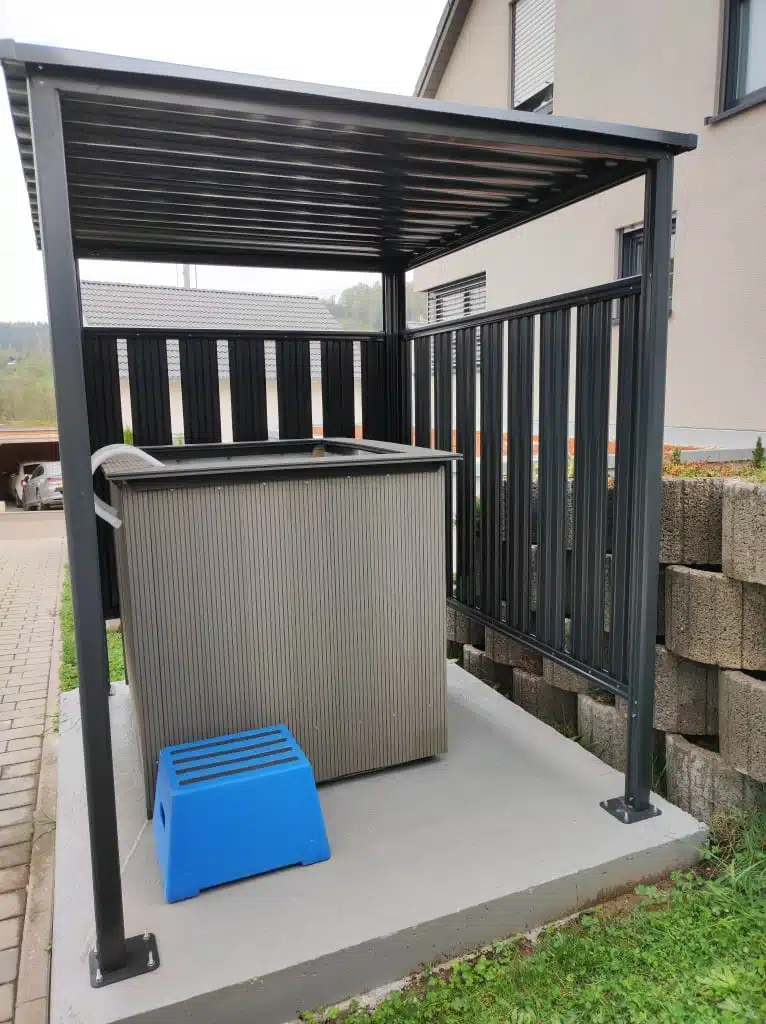
Vor- und Nachteile von IBC Containern zum Eisbaden
| Vorteile | Nachteile |
|---|---|
| Preislich eher im unteren Bereich | Optik im Original sehr unschön |
| Meist mit Ablaßhahn | Viel Platz und Wasserverbrauch |
| Viel Platz, eignet sich gut 2-3 Personen | Dünnes Material, anfällig für Risse |
| Naturerlebnis sofern draußen aufgestellt | Bastelarbeit |
Alternativen vom Abfallcontainer bis zur Weidetränke
Unsere Eisbaden Community lebt es vor – Im Prinzip kannst du Eisbaden in jeglichen Behältern von Mülltonnen, Weinfässern, über Weidetränken bis zu Zisternen praktizieren. Es ist vielleicht nicht immer die bequemste Variante, aber geht allemal, wenn der Behälter groß genug ist und du dir nicht zu fein dafür bist 😉
So hat Gobi Grablax aus unserer Community mehr als einen Versuch gestartet, um optimale Bedingungen für das Eisbaden zuhause zu schaffen. Angefangen hat das Ganze mit dem Kauf eines 240 Liter Abfallcontainers für gerade mal 89 Euro. Die Idee hatte Gobi aus einem Artikel, in dem über Spieler des FC Arsenal berichtet wurde, die Eisbaden in umfunktionierten Mülltonnen praktizieren. Wie das Bild unten zeigt, war diese Lösung für Gobi jedoch suboptimal – bei einer Körpergröße von 190 Zentimetern war der Abfallcontainer schlicht und einfach zu knapp.

Nach einer weiteren Recherche stieß Gobi auf Weidetränken, die unter amerikanischen Eisbadern sehr beliebt zu sein scheinen. Das gängige Produkt von Rubbermaid war zwar nicht in Deutschland erhältlich, aber es waren glücklicherweise ähnliche Produkte zu finden. Heute badet Gobi in einer Weidetränke mit 1.000 Liter Fassungsvermögen und kann sich nun ordentlich ausstrecken. Mit ca. 450 Euro sind die Anschaffungskosten für eine Weidetränke zwar wesentlich höher als bei einem Abfallcontainer, aber dafür ist auch das Erlebnis beim Eisbaden um einiges angenehmer.
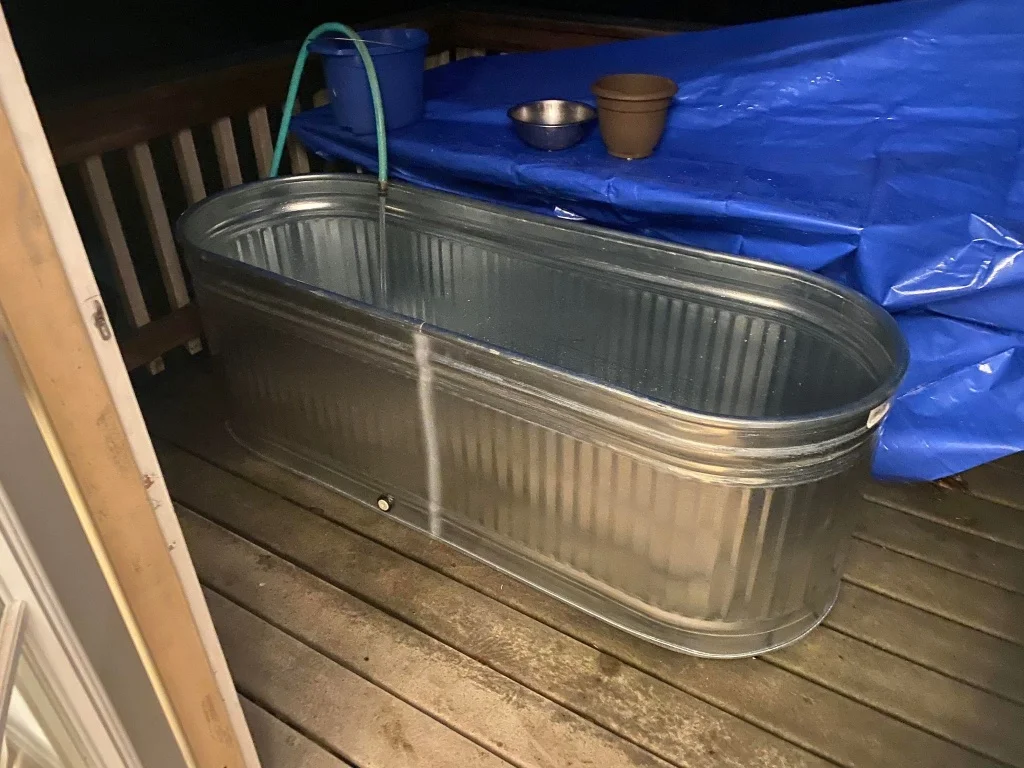
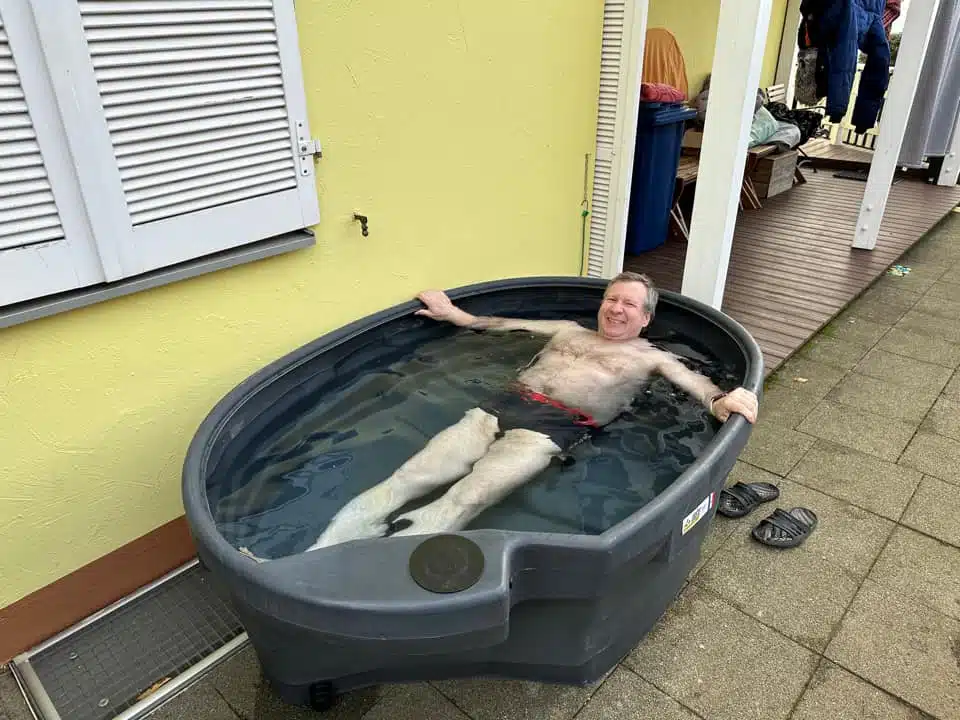
Auch in einem Pool kann man natürlich Eisbaden praktizieren. Allein aufgrund des Platzbedarfs und der hohen Anschaffungskosten werden sich die Wenigsten unter uns einen Pool bauen lassen. Aber für diejenigen, die ohnehin einen Pool auf ihrem Grundstück stehen haben, macht es allemal Sinn, diesen rund um das Jahr zu nutzen. So macht es auch Johann Egger aus unserer Community: Anfang Dezember hat er die Heizung für seinen Salzwasserpool ausgeschaltet, Mitte Dezember lag die Wassertemperatur bei nur noch rund 7 Grad – optimale Bedingungen für Johann, der noch relativ neu in der Welt des Eisbadens ist. Wer übrigens in Graz & Umgebung lebt, sollte seine Augen offen halten, denn Johann hat schon einmal Eisbader aus der Gegend zum gemeinsamen Winterbaden eingeladen. Ausreichend Platz dafür bietet sein Pool auf alle Fälle. Und wie oft bekommt man schon die Gelegenheit, mitten im Winter bei einer Poolparty mitzumachen?
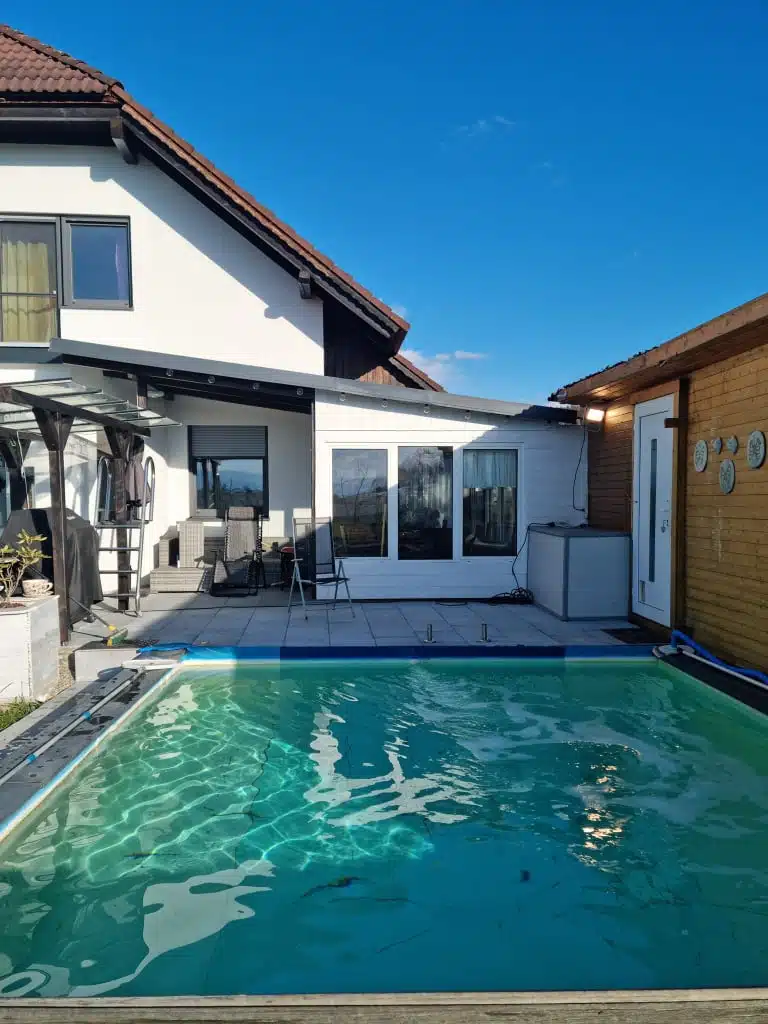
Welches Volumen und welche Größe sollte dein Eisbad haben?
Regentonnen gibt es in allen möglichen Formen, Farben und Größen. Die Farbe ist natürlich reine Geschmackssache, aber bei der Form kann man schon etwas mehr Pragmatismus an den Tag legen. Eine runde Wassertonne ist am sparsamsten, was den Flächenverbrauch angeht und sie benötigt die geringsten Dimensionen, da du den Platz in eckigen Tonnen nicht so optimal nutzen kannst. Dadurch kannst du eine kleineres Fass nutzen und hast damit weniger Wasser- und Energieverbrauch.
Das Volumen deiner Tonne sollte mindestens 180-200 Liter fassen. Optimalerweise zwischen 300-500 Litern. Bei den Dimensionen solltest du darauf achten, dass die Tonne in etwas 70-100 Zentimeter hoch ist, damit du gut in einer Hockposition reinpasst. Ein Durchmesser von mindestens 70-80 Zentimeter sollte gewährleistet sein, um bequem reinzupassen.
Vergleich zwischen Eistonne, Eiswanne, Eisfass, IBC-Container, Kühltruhe, Pool und Alternativen – unser Fazit
Du siehst es schon: Für das Eisbaden zuhause gibt es viele Möglichkeiten. Und sogar noch viele mehr, wenn du kreativ wirst. Nachdem wir dir nun gezeigt haben, welche Ideen die Eisbader und Eisbaderinnen aus unserer eigenen Community, aber auch aus anderen Ländern umsetzen, möchten wir zum Schluss ein kurzes Resümee ziehen, welche Option sich aus unserer Sicht am besten für das Eisbaden eignet.
Unser Favorit von den oben genannten Möglichkeiten ist das Eisbaden in einer Tonne, Fass oder Tub. Tubs sind leicht aufzubauen, mobil und günstig, dafür halten sie nicht ewig. Regentonnen und Eisfässer sind ebenfalls kostengünstig und robust und du kannst sie vielseitig sowohl im Sommer als Regenwasserspeicher als auch im Winter zum Eisbaden nutzen. Frischluftfeeling hast du bei beiden Varianten und ebenfalls ein gutes Preis-Leistungs-Verhältnis.
Wer auch Eisbaden im Sommer machen möchte der kommt an einer Tiefkühltruhe oder einer speziellen Freezer / Tonne Kombination nicht vorbei. Damit kannst du jedoch dein Eisbaden um die ganze Sommersaison erweitern und das ist natürlich ein sehr großer Vorteil.
Als letztes sind die Vielfältigen Bastellösungen auch nicht verkehrt je nachdem wie viel Zeit und Mühe du reinstecken willst.







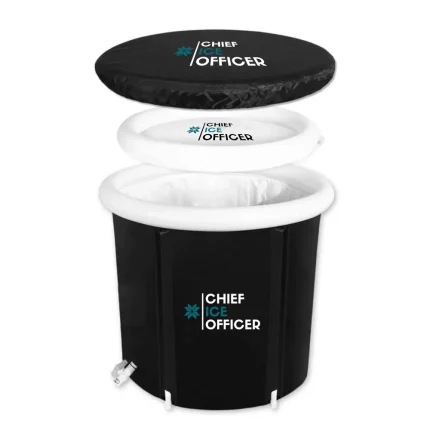
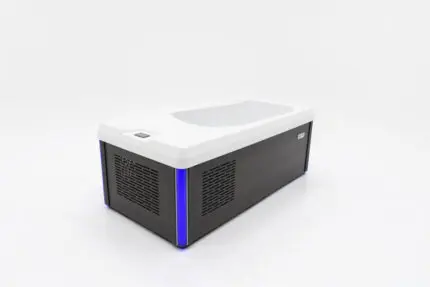
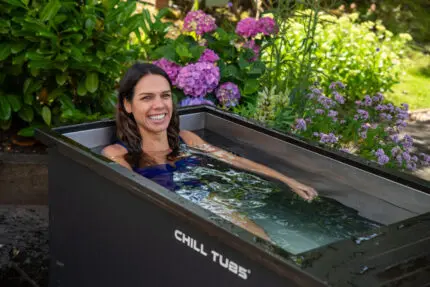
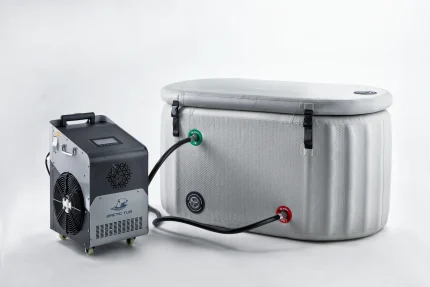

Hello!
I plan to put a bathing bathing in the garden and fill it with tap water. How often does the water have to be changed? Does it need additives (which I would like to do) if it is used longer?
I would be happy to receive an answer.
Many greetings Horst
Hi Horst,
in winter you can leave the water for several weeks without any problems without emptying the bin. Would say 2 months max. If it's cold enough. So you don't need any additives. In summer you should at least partially change the water every 2 weeks.
Freezing chest all reservoir; Pump in bathtub; drain afterwards.
Greetings
Good morning! 🙂
I bought a folding tub and (yes, I know, too early for Cold Plunge ;-)), but unfortunately I have already had mosquito larvae in it. I don't want to go in with chlorine, in the network is the detergent or oil, but that doesn't prevent the "settlement", right? LG, Martina
Hi Martina, there is usually a cover. Of course you should use that. We also have a network against mosquitoes and occasionally make tablets in. The hot Culinex Tab Plus and have a biological active ingredient to combat mosquito larvae. Hope that helps!
Hello,
how do you prevent freezing in winter?
Hello Claudia, there are different tricks to make the water bin frost -proof. You should not make them too full, but only fill about half or max 2/3. As a result, the ice cream has to expand. Some also do thicker styrofoam or styrodur blocks on the water surface. Alternatively, a larger block of wood. This can also absorb the pressure of the ice. It always depends on how cold it is and how strongly the bin oversets.
Tons with lids are also better protected from freezing than if you leave the bin completely open.
Some also swear by salt (or sugar), since this also shifts freezing point, I consider 200-300 liters of tons to be quite a waste of resources.
Thank you ?
Hello, my dears! I'm just planning to make the planning for my ice pool bin, my only concerns are, how does the whole thing work in winter? Has your bin ever frozen? And what can you do about it? 🙂
Hello Romina, I already answered the same question from Claudia at the top, who came to the same topic shortly before. Hopefully that will help you!
VG
Anna
Hello you dear ice saints,
we plan Cold Plunge with several people at the same time. Can someone give me a tip where I can buy a small pool for three to four people? Preferably something stable, we would like to repeat the event several times.
Thank you very much and warm greetings!
Heiner
Hello Heiner, thanks for your request. We have good contacts with manufacturers with larger pools. What material are you looking for from? PE, wood, metal? What form should that be? I assume you are looking for something round? If you get in touch with us using the contact form, we can search for something.
Hey!
A great topic the more comprehensive than just the cold shower 🙂
I would like to put a 250 liter ton with water on Melendez balcony and put a euro pallet under it, but I have concerns about the weight. How could you proceed here?
Thanks!
Jacob
Hello Jakob,
you should actually check the statics before you do it, as much weight is on a relatively small area. I once read that there are approximately 300 kg per square meter for standard balcony, so you are very close. To do this, your landlord or a structural engineer should be able to tell you whether this is possible. But it may already be borderline. Alternatively, there are of course smaller tons / tubs with less capacity, see also in our shop the standard tub with a maximum of 200 liters of capacity from which you can pull off your body weight. Of course, it also depends on what the bin weighs, these inflatable tubs have only approx. 4 kg weight.
Hope that helps!
VG
Anna
Hello,
I put a rain barrel in the garden and since it is still quite mild outside,
I would like to ask how much ice I should tip into the bin?
Or did I read that 0.5 L. plastic bottles filled with water will also be used?
Do you have any experience?
Best regards and thank you!
Sylvia
Hello Sylvia, it depends on how cold you want to have it in the bin and how many liters of water it has. A good rule of thumb is 3/4 water 1/4 ice, but depending on the outside temperature, it can only be 10-20% ice in the cooler weather. Plastic bottles are well suited to cool water and the cheapest variant. However, you need some of them. We also have large ice cubes in the shop (approx. 1 liter).
So with a 250 liter bin, you have about 200 liters of water content. Of which then 10-20% ice cream in autumn or winter, it would be approximately 20-40 kg of ice cream. If your bin is isolated, it will last for several days.
Hey Hey, wanted to ask how much salt you have to pour the swimming bottish so that it doesn't freeze. I have 150-200 liters in it
Hi Sonja, that's a good question. I was also interested and therefore researched it. Of course, it depends on freezing point, so how cold does it get with you and where do you want to lower freezing point. I saw a diagram where it was that about 20 grams of salt / liter reduces freezing around 1 degree Celsius. At 35 grams of salt / liter (salt concentration of the sea) it would be at -2 degrees and so on. So approx. 15-20 grams of salt reduce the temperature in which your water freezes.
So as an invoice, if you want your water at -4 degrees Celsius, then you should take about 15 grams * 4 per liter of water, i.e. 60 grams 60 grams 150 liters = 9,000 grams = 9 kg salt.
Hello Anna, do you have experience with Cold Plunge in summer without freezer or instantaneous cooler? I think about whether it can work at 30 degrees, for example, to fill the barrique barrel with cold tap water (again a corner of colder than from the garden hose), cool down with ice cream, and then isolate with a kind of thermopolitue so that the heat does not come in and, for example, refill a few kg of ice every second day?
Hello Philip,
without instantaneous cooler or professional freezer or TK chest, it will be difficult to cool water in midsummer on Cold Plunge temperatures (<5 ° C). We have a few ice cubes in the shop that produce about 1 kg of ice cream. 10 of them would probably be enough for autumn / winter / spring to cool the water temperature. Probably not on <5 except in winter but cool enough. That would be the cheapest variant. Also with an aluminum foil drumrum would be lost too much energy. Shadow is always good, except that it is of course more beautiful to blink into the sun Cold Plunge
Hi, what addition can you recommend to keep the water germ -free and at what intervals do you have to do that?
Greetings
Oliver
Hello Oliver,
the distances depend heavily from the water temperature. In winter about 3-5 weeks, in summer about every 2 weeks.
Change water is relatively cheap, of course also depends on the vessel size, but if you change about 100 liters of water every 2 weeks, you have 25*100 liters = 2,600 liters of water consumption per year. The cubic meter price (1,000 liters of water) is around EUR 5.20 costs per year. It is not worth optimizing there.
Otherwise, however, there is chlorine, vinegar and ceramic elements that should help to maintain water quality for longer.
Hello Anna,
I have had my own cold plunge ton on our terrace since yesterday, was right in it and am something of Happy 😀. Do you want photos? 😅
I think your site is now and I have to praise myself: I have done everything guidelines 😄🤗.
The information about ceramics is great. How much (pipes?) And which shape/ manufacturer can you recommend for about 150 liters for about 2 months?
I am still missing a thermometer (for connecting because also for the lake) .. I have been looking for it for a long time and find nothing. Somehow I don't want these baby tubs Thermomether. Do you have a tip?
Kind regards Sylvia from Leverkusen
(is there a "regional cold plunge meeting area"?)
Hello Sylvia,
great, we are very happy. Happyness is an important part of the Cold Plunge 🙂
If you want to get into our cold plunge .de facebook group, then you are welcome to post your pictures. But like to send your picture, maybe we will find a use on the blog ...
The ceramic, the pipes are usually round. They are available from various manufacturers (e.g. EM-Chiemgau). You can take a 500g bag, that should be enough for a tub, the 150 liters of water are not exactly much.
There are also different thermometers. We also have them on offer. Is a digital thermometer that also measures with minus degrees. However, it is not waterproof, but it has a probe that you can hold in the water: https: // cold plunge .de/ shop/ cold plunge -thermometer/
You can find regional groups at: https: // cold plunge .de/ cold plunge group -stated/
maybe you will find someone near you?
Hello, I am looking for a pasture drink as with " Cold Plunge in the pasture drinks © Gobi Grablax" - who can help me where I get something like that? Thanks for the help!
You are welcome to get in touch with us, we can also get all sorts of tons and barrels 🙂
Hello,
Cold Plunge now (after reading your article) 🙂
Do you happen to have experience with the addition of salt? Would the water last longer, so I would have to change it less often?
I would be very interested, salt is generally good for health.
Unfortunately,
because of the durability of the water on Cold Plunge
Hello Tony,
generally the best is to replace the water. There have been many discussions in our group. Encourages improve water quality only to a limited extent. (EPSOM) Salt is usually used, but it is more used to relax the muscles than water cleaning. What has proven itself in cooling systems are ozone and UV cleaning. And then there are still tablets that contain some chlorine, but with rather low burial.
Hello everyone, after I had bathed out in a small ice cream for several months now ... "Threatened" to me now. A leak cooler and the 550 liter pasture drinks from Kerbl is ordered. More space in the ice pool and no heat problem ... I'm looking forward to it! How did other pasture beer users realize the cover/insulation in the event of non -use? The formwork/cladding with WPS and filling of the cavities with sheep's wool was my consideration for the sides. I don't yet know how to make the lid/upper cover sensibly and conveniently in handling. Does anyone have experience and tips for it? The tub is on the house wall ... so I could "something" attach it to it.
Which flow cooler did you order?
Hello in the round,
thank you for the great information here on the page!
I would like to put a inflatable tub on the balcony and wonder how you to empty the tub on balconies, or to "dispose of" 100 liters of water quickly while changing.
Many greetings
Julia
Hello Julia,
good question. There is a water outlet below and one on the side in the tub. The side has a valve and there is also a short piece of tube with approx. 20 centimeters (with the package) which helps you to extend the side process and, for example, run over the balcony edge. With a simple hose from the hardware store, which you attach to the valve (has a screw connection) you can of course extend the process even more.
Alternatives if you cannot simply drain the water:
1. The valve can drain the water in a controlled manner and place a flat container underneath and then let it up grad.
2. A pond pump could pump the water from the tub into a container of your choice.
3. You make access to a rain gutter and leave the water over it.
Hope that helped 🙂
Hello Constantin,
thank you very much, there are great ideas! I will definitely do that with the extension of the drain.
Let's see if I can get access to rain gutter 😊
Many greetings
Julia
Thanks for this great site.
I would like to put a rain barrel on the balcony, especially in winter you always have the right temperature with the Cold Plunge :-).
For me the question would be whether you have experience with the use of rainwater? I am thinking about filling the bin with it. And basically always put a lid on the bin. Then no germs should form.
In summer I would not do it because the germ formation seems too critical for me.
LG Hannes
Hello Hannes,
the rain barrel is very suitable for the Cold Plunge . We have a lot of positive reports. Germ formation is not a problem, because mostly you have to empty a part from the bin (depending on the size approx. 1/3 of the volume) and then have space in it. This part is then filled with fresh rainwater again the next time you have installed a rainwater collector on the downpipe. So you always get fresh water and you can completely empty the bin if necessary even before a rainy day and clean them and then completely fill it up again.
For the summer you can also use it on the same principle.
With one of these coolers you could also cool the water in the rain barrel: https: // cold plunge .de/ shop/ cold plunge tonne-kuehlsystem-basic set/
Hello everyone
Since we go to our rain barrel every day in winter, we are looking for a solution for summer. We were about to buy this chic ice pool and then we read your contribution to the freezer 🙂
In terms of price, of course, a huge difference but with the visible advantages of the seating position and also an adjustable app so that the water is cold every morning. What are your critical thoughts about the chest?
But would also take a freezer if you share your tips:
- How can you set that the temperature is cold every morning? Without having to switch on my chest at midnight. Maybe app control of the socket? Or how do you regulate this on and off the chest?
- How did you solve the optics? Wood cladding? Would you have to stand in the garden and I can't get a bare chest with my wife 😉
- Do you have a favorite to be able to sit reasonably comfortably (for 175 cm height)? The picture of Constantin in his chest looks very small.
Thank you very much!
Icy greetings
Stephan
Hello Stephan,
thanks for your questions:
- How can you set that the temperature is cold every morning? Without having to switch on my chest at midnight. Maybe app control of the socket? Or how do you regulate this on and off the chest?
-> Simply set over a timer. It works very well.
- How did you solve the optics? Wood cladding? Would have to stand in the garden and I don't get a bare chest from my wife 😉
-> when it comes to functionality alone, then the optics are of course secondary and sometimes counterproductive, since you may limit the air supply to the cooling device and your cooling device either takes longer or can even be damaged. In general, of course, there is nothing against a nice cladding if you solve it professionally.
- Do you have a favorite to be able to sit somewhat pleasant (for 175 cm height)? The picture of Constantin in his chest looks very small.
-> I am 1.83 m high and fit in really well. We also had someone with 1.98 meters and that also worked. With small pools, the cost of water and cooling is simply lower, which is why these are very good arguments for a rather smaller pool. I would not recommend buying even smaller, but not necessarily much bigger either.
Hope that helps you with decision -making!
Icy greetings back
Constantin 🙂
Thanks for your answers. Decision made, it will be a freezer! 😉
Now I have also seen in a video ( https://www.youtube.com/watch?v=57l8t3flw8s ) that you should also take an epoxy to seal the entire walls, e.g. Pond Shield. That seems to be significantly more work than with you? What do you think of it? If waterproof then right or is the silicone really enough?
Have been using an old Liebherr Fleischkühlkun (350L) for 3 weeks. I have to say it's just fantastic. I'm really not talented and it was still totally easy to silica. Simply go over all joints once and pull the excess silicone with a wooden handle. Then let the chest run for 48 hours and after that were mega ice blocks. Have only running the chest 1 hour a day since then, it is enough for me to always have the water full of ice cream. I can only recommend it to everyone!
A short demand:
How wide is your chest on your shoulders? Is your described inner depth the width or height? Thanks ever 🙂
Hello, I have a question. We want to have an ice cream barrel for a long time, but we don't dare to buy it yet. We have a balcony (presumably with max. Last of 300kg/m², the property management can be given a lot of time with answers, but we can probably assume this standard load during the new building). Many of the tons have a weight (filled) of 280kg. Do I now have to remove the body weight or calculate on it? I weigh 55kg. Is the load at 225kg or on top at 335kg? Thanks and best regards, Johanna
Hello Johanna,
you should once add the weight of the ton plus water amount plus your own weight. With our heaviest bin, for example, the weight is 100 kg plus about 150 liters of water content plus your 55 kg you would be around 300 kg. If you take a lighter tub then you get significantly less: Tub 4 kg, water 150 kg and body weight 55 kg you are at just over 200 kg as a whole.
If you want something heavier, you can also see if you can't put a floor slab below that, for example, 2-3 sqm. That would distribute the weight better and you would have a lot more scope if you have concerns about the load.
Are there any empirical values between the normal ice barrels and inflatable tubs that are probably significantly better insulated? I would like to put one in the garden with instantaneous coolers because the tap water with us in summer simply gets very warm.
My question is primarily about the ecological balance, so how much less electricity do I need when I have an inflatable barrel with direct connections compared to a thin -walled tub.
Hello Felix,
that's a very good question. So in the ranking from super insulated to not isolated, the inflatable tubs are a variant that is located in the upper area and is well insulated. The air cushion on the side and in the lid holds back the cold well. However, the pools are usually quite large, which requires a little more cooling power than with small tubs. In addition, you can also put wood or a few mats down at the bottom (the floor is usually only a film) and thereby also provide isolation on the ground. Furthermore, the pelvis should not be in the blazing sun, otherwise all the isolation does not bring anything, which will also be very warm with air cushion. Cannot be compared to a freezer and if you do not use the pool every day or every other day, the water will still reach almost air temperature. In other words, it doesn't stay well chilled over several days.
VG
Constantin
Hi
Can you operate the ice -barrel Chief Ice Officer for a whole winter outdoors without any problems?
Thank you very much - greetings Christian
Hello Christian,
thanks for your question. Yes, this is not a problem, the Chief Ice Officer bin you can operate the entire winter outdoors.
VG
Constantin
Hello Constantin and Anna,
I want to put a freezer on the balcony, but most of them are laid out for 16 ° C to 32 ° C. Have you experienced problems in winter or gather practical experience, supposedly the oil for the compressor should be viscous below 10 ° C and the cooling fluid freeze at freezing degrees?
Thank you and greetings
Dennis
Hi Dennis,
interesting, we have never tried it. Because with freezing degrees we do not cool down with the TK chest. In this respect, I can't tell you that, but generally oil loses viscosity in the cold and the device is built for the operation inside. Why do you still want to switch it on in winter with freezing temperatures?
Many greetings
Anna
Servus together,
I've been going cold plunge for almost 3 years now, but only to the autumn/winter months where it is really cold outside.
I started with a simple regent barrel that was too small for me at 1.85 m. Then a grapes with 750 l content taken at the winemaker where 3 people would like to fit in. However, this is very difficult to postpone and visually no scroll for my wife.
This year I ordered a instantaneous cooler that also works great and put an XXL bathtub into the basement that has a styrofoam wall. Everything is going well, but now I have a problem with the condensation, the tub is made of acrylic and since the air temperature is warmer than the water temperature of 3 degrees, a lot of condensation forms on the wall of the tub, and in fact, the soil is often wet.
Is there a tip from anyone how to fix the condenser, possibly to glue the tub with Armaflex?
Or are there materials or other tubs that don't have the problem or handle it well?
Just don't want it to form mold in the basement.
Thank you very much for an info
Does the condensation between the styrofoam layer and the acrylic tub form? Actually, the styrofoam should insulate so well that the condensation does not occur.
Many greetings
Constantin
Hey Constantin,
Thanks for your feedback.
Yes, the condensation is created on the underside of the tub itself.
As a result, it runs down from the styrofoam and there could form mold if it is not dried.
Hence the question of whether other material surfaces also have this problem or not.
LG
Hello Constantin and Anna,
Cold Plunge in winter and look for a ton/vessel, which does not do any damage even with freezing levels. Since regentons burst at ice at some point, I wanted to know whether the ice -barrel Chief Ice Officer
survives such weather?
Thank you and best regards
Stefan
Hello Stefan,
you can also leave the Chief Ice Officer bin outside with freezing levels. This is a bit flexible and extends a bit in the event of tension. You have to be careful when you chop out that you don't damage the bin but otherwise it works 🙂
Many greetings
Constantin
Hello Constantin,
thank you very much for your quick answer, this also makes it easier for me to make a purchase decision.
Many greetings
Stefan
Hello in the round,
I am a newcomer here and could get an acrylic bathtub that I want to set up in the garden in winter and fill with rainwater.
Can someone tell me whether acrylic can also tolerate frost or if necessary does an ice layer of the tub damage?
Thanks in advance
Welcome to the round, Kathrin 😊
Acrylic bathtubs are robust, but frost and ice cream can actually be a problem. Here are some points that you should consider:
Acrylic itself is relatively flexible and can withstand slight temperature fluctuations. However, it is not completely frost -proof.
When water is in the tub and freezes, the ice extends. This expansion can cause cracks in the material. A thin layer of ice will probably not damage the tub immediately, but thick or frequent layers of ice can cause long -term damage such as cracks or deformations.
Plastic tonnes or metal tubs would be more suitable for permanent outdoor use.
Many greetings
Constantin
Thanks for the detailed and practical article! I found the possibilities to set up my own ice sun particularly exciting. The tips on water hygiene and temperature control are super helpful, especially for beginners. I am currently considering getting an IBC ton-someone has already had experience with it? How often do you change the water? LG, Mario